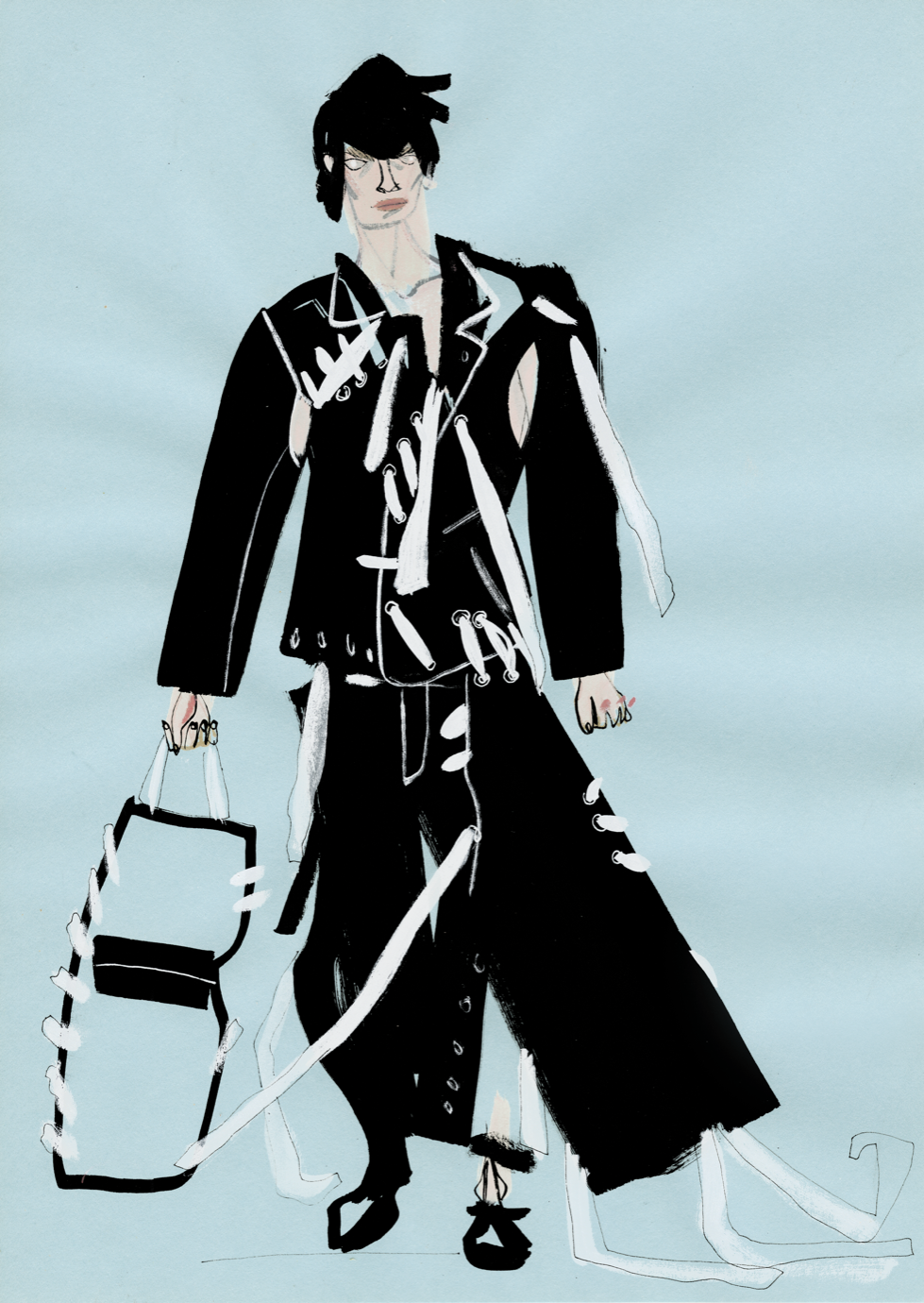Fashion loves novelty, and tech has provided the perfect fodder for that. Gimmicky ideas like wearable tech have never really taken off, so tech has been relegated to a fashion PR stunt. “I remember going to SXSW and there were things being shown like a horse dancing on the front of a sweatshirt made of LEDs and thinking, this is really not the future,” says Matt. Several brands have tried AR (Augmented Reality) on for size, but their efforts seem to be limited to, well, trying on. Gucci partnered with tech startup Wannaby to allow customers to photograph their feet in the classic Ace trainer, customising the clean silhouette with embroidered patches, stripes and studs. At John Lewis, customers can virtually try on lipstick from more than 300 brands, including Charlotte Tilbury and MAC — L’Oreal recently launched a version of this that expands to eye looks and hair colours. Back in March, Dior created an Instagram filter to let people try on their new ‘DiorSoLight’ sunglasses. So what will it take for digital fashion to move into the mainstream? Matt thinks big brands hold the key. “I think the floodgates will start to open up once others see a big brand embracing this,” he says. “It will take a brand like Gucci that isn’t afraid to take a bit more risk with things to do a large scale project.”
Matt and Assaf are turning their attention to the gaming industry in a bid to bring digital fashion to the masses. Assaf is keen to point out the financial incentive for making the switch. “The problems young designers are facing now and the problems the big brands are facing are connected,” he explains. “If you don’t have massive backing, there is a very small chance you’ll be able to do your own thing and make it work financially in the long-term. There is a big opportunity in gaming cosmetics, but only a few small collaborations have explored it so far. We want to help fashion and gaming companies make this into a practical solution.” The wildly popular Fortnite game earned its parent company, Epic Games, $1 billion in micro-transactions in 2018. While the game itself is free, users can buy ‘skins’ and other cosmetic upgrades. These microtransactions played a huge part in making Fortnite the most annual revenue of any game in history, and highlight the potential for fashion brands to collaborate with the gaming industry. “What we’re offering is not a small PR project but an integral part of how fashion brands can create revenue,” adds Assaf. IVA offers designers the chance to profit from creations that are rarely deemed commercial by physical stores. The exaggerated show pieces designers are often warned against making after graduation are more viable in digital spaces, so creativity and spectacle becomes an asset instead of a limitation.
“The fashion industry doesn’t necessarily have the technical skills, and the tech side doesn’t necessarily have the cultural background to communicate with the fashion side.”
Gamers are becoming the new influencers. “The big e-sports players are celebrities in that world,” says Matt. “They have millions of people watching them play.” Given the waste currently produced by influencer marketing tactics, embracing digital fashion and e-sports influencers could mark a significant reduction in fashion’s environmental impact. Instead of sending influencers physical clothes, only for them to be photographed and then discarded, brands could send blockchain access to digital clothes, enabling the digital clothes to pass from brand to influencer without risk of tampering or interception. Alternatively, they could simply edit digital clothes onto existing photographs. Scandinavian multi-brand chain Carlings are already trialling the latter method, albeit on a time-consuming, case-by-case basis. IVA are focused on seamlessly integrated, realistic and sustainable solutions, hence their initial spotlight on gaming.
















